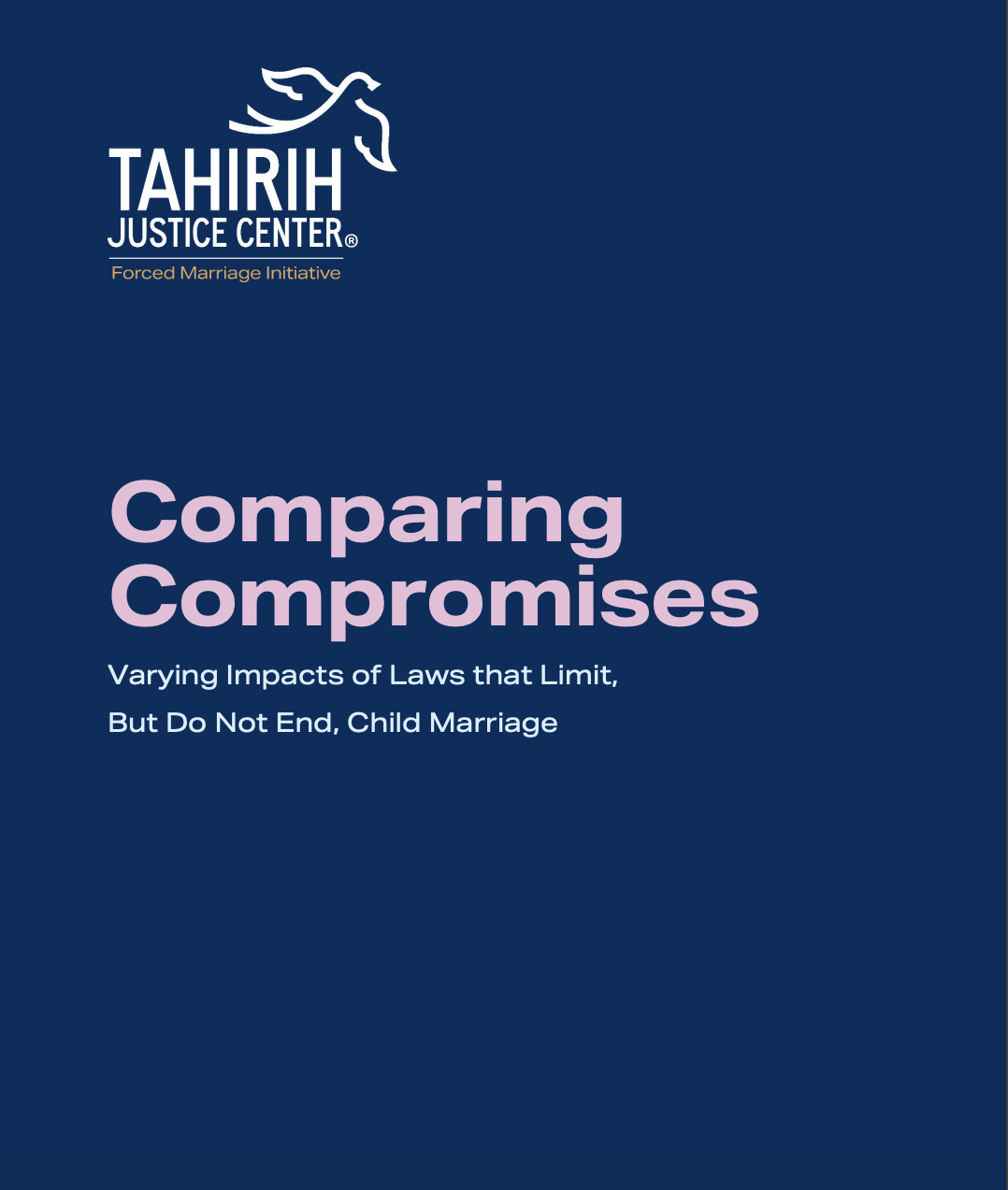 Child marriage in the U.S. is a modern-day problem. While there has been considerable progress in some states since Tahirih spearheaded a movement to end child marriage in this country, there is still more work to be done. Ultimately, all states should aspire to end child marriage. The only way to prevent all child marriages is to set the minimum marriage age at 18, without exceptions. Anything less than this leaves children at risk.
Child marriage in the U.S. is a modern-day problem. While there has been considerable progress in some states since Tahirih spearheaded a movement to end child marriage in this country, there is still more work to be done. Ultimately, all states should aspire to end child marriage. The only way to prevent all child marriages is to set the minimum marriage age at 18, without exceptions. Anything less than this leaves children at risk.
In Comparing Compromises: Varying Impacts of Laws that Limit, But Do Not End Child Marriage, Tahirih analyzes data from states that have recently passed a reform to limit child marriage. The report compares the effectiveness of “compromise” legislation – laws that fall short of eliminating marriage under age 18. When complete elimination of child marriage is not possible, the research found that limiting marriage to legal adults, with a robust judicial process, offers the most protection. States that implemented this type of reform saw up to a 96% reduction in child marriage.
“The United States is a host of contradictions when it comes to protecting children from the lifelong harms of child marriage. Despite our vocal support of human rights around the globe, our current state laws and federal immigration laws both sanction and facilitate child marriages happening in our own backyard. This must change,” said Casey Carter Swegman, Director of Public Policy at the Tahirih Justice Center. “Child marriage on U.S. soil is no less harmful than child marriage occurring elsewhere, and we must treat this issue with the same urgency here as we do when it happens abroad. Our children deserve better.”
Other compromise laws were far less effective at preventing child marriages, showing us that the impacts of these reforms vary greatly and there are critical differences hidden in the details of legislative text.
The data show us that laws limiting child marriage do prevent harm, but they do not prevent 100% of it. They show us that a few additional lines of bill text can make a world of difference, but that even the most well-constructed compromise may yet allow some children fall through the cracks. They show us that some provisions are more impactful than others, but that every additional safeguard matters and is worth fighting for. The cumulative weight of small victories makes a large difference, but small victories are not enough.
Tahirih celebrates all the gains made in this national movement, and we resolve to keep pushing until the final goal is achieved: an end to all child marriage in the United States.

